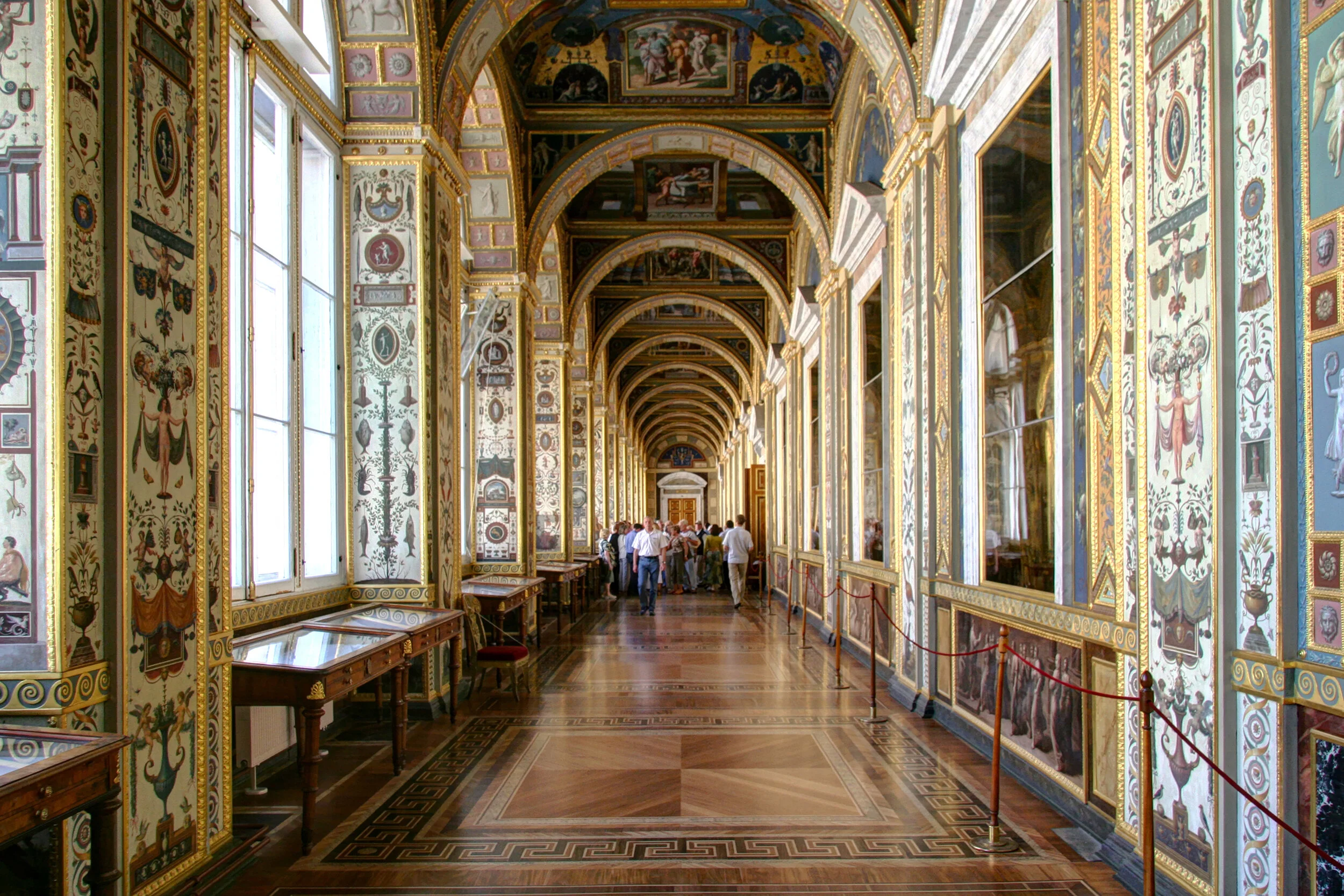
Page 6 of 10
Saint Petersburg, Russia
Precious and fragile things need special handling
Russia is not the easiest place to visit. First and foremost all visitors need a visa, but even before you get a visa you first need an invitation, something which can be secured through most (but not all) hotel reservations or through some commercial services. I decided to do it independently (go figure), and armed with my invitation I was able to secure my visa from the Russian consulate in New York (right across the street from the Cooper Hewitt Museum) with little (although with some) real trouble. With my visa and my correctly filled out arrival card (with all of its instructions in Cyrillic) I was admitted entry via the five or six hour long day train from Helsinki Central to Saint Petersburg Ladona Railway Station. Customs are handled on the train, just as the train passes through the cool Cold War equipped "customs zone," complete with lots of atmospheric guard towers staffed with machine gun armed soldiers.
Eventually you find yourself in Saint Petersburg, one of the more physically beautiful cities on earth. At the end of the Nevsky Prospekt, right where the city meets the Neva River, the buildings of the world famous State Hermitage Museum line the enormously scaled Dvortsovaya Ploshchad, complete with its enormously scaled central Alexander Column, a monument to the then tsarist victory over that bastard Napoleon.
A small, telling detail of the imperial fence that surrounds the Alexander Column. In the distance and out of focus is the Winter Palace, once the home of the tsars and now part of the seemingly unending Hermitage museum.
Inside the gate, inside the courtyard, looking back to the Dvortsovaya Ploshchad (Palace Square), the Alexander Column and straight through to the Admiralty. Normally a good place to be, except maybe for a time in October 1917 (or November 1917, depending how accurate you calendar was) when the Bolsheviks stormed the Winter Palace which was occupied by a provisional government- the tsars were overthrown in February of that year. The result was the start of the Soviet Union and another name change for the city. Saint Petersburg started off as Saint Petersburg, then was renamed during World War 1 to Petrograd (locals thought Saint Petersburg sounded too German), then Leningrad (since Petrograd sounded too much like Peter the Great) and then back to Saint Petersburg after everyone decided Lenin just wasn't working for them anymore.
The State Hermitage Museum is hands down one of the world's greatest museums, although not necessarily one of my favorites. Closer in scale and scope to the Louvre, Prado and Met, it displays treasure after treasure in gloriously decorated room after glorious decorated room. The museum occupies a string of buildings including the inside of Romanovs' Winter Palace, and is configured in such a way that be generously described as disorientating to its visitors.
In addition to all of the expected, well appointed (although not air conditioned) galleries, the historically important rooms of the Winter Palace are open to enjoy. A welcome chance to walk the rooms and halls where the Romanovs lived and held court, at least during the winter.
These pictures (and the previous ones) are a bit misleading and do not really convey the real Hermitage experience. The Hermitage is both one of the world's greatest museums and one of its most visited, it was especially rare to find such an open gap in all of the otherwise crushing humanity.
Ok, this one is a little more like it really was.
While certainly worth the trouble, there are things you should be aware of when you decide to visit the Hermitage. The first thing is that it is exponentially more expensive to visit if you are not Russian, something which doesn't really bother me but might bother some. Another thing is that if you want to bring your camera in you can (in most rooms), but you'll have to pay extra for the right to do so. Another thing is that if you look like a non Russian (by carrying an expensive looking digital SLR around your neck for example), there is a good chance you will be constantly approached by locals hoping to guide you around the museum for a price- something I avoided more for my deep dislike of being told what art I should enjoy than for any other reason. Another thing is to avoid warm days- the State Hermitage Museum is not air conditioned, something you'll really start to notice the longer you stay. And finally you should be prepared for crowds and lots of them- the worst being large tour groups who seem to converge in the most popular areas. I don't think there's any way to avoid them, so it's probably best to either quietly let them pass or to just quietly tag along and enjoy their free guides for a while.

